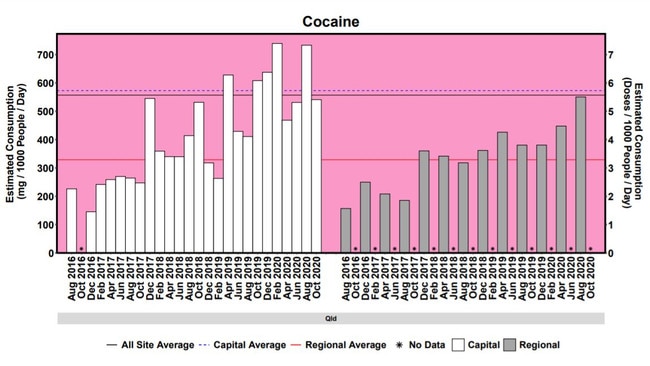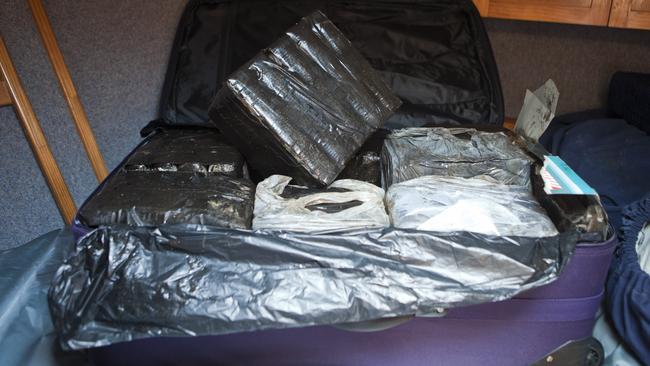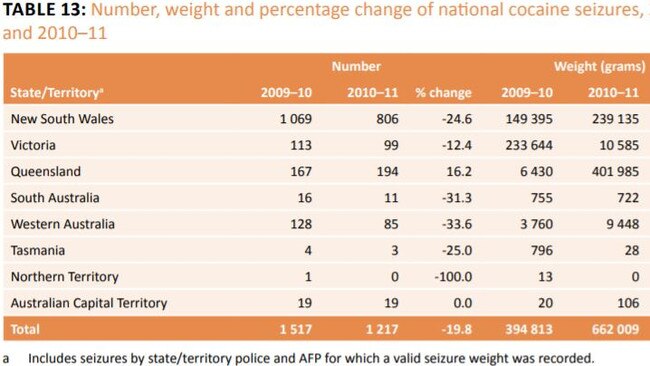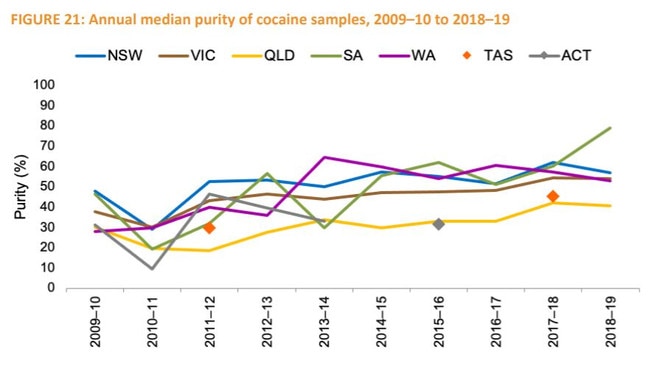Powder keg: How the cocaine industry snared Queensland
A decade ago, cocaine was a peripheral drug used by the richest few, now Queenslanders can’t get enough of the destructive drug. How did this happen?
Local
Don't miss out on the headlines from Local. Followed categories will be added to My News.
One of Queensland’s top cops targeting drug use and crime in the state has warned Queenslanders that criminal syndicates peddling cocaine are targeting Australia, attracted by its low cost to produce and high cost we are willing to pay.
He’s backed up by several significant longitudinal studies, most importantly the Australian Criminal Intelligence Commission’s National Wastewater Drug Monitoring Program and Illicit Drug Data Report, and the Australian Institute of Health and Welfare’s National Drug Strategy Household Survey, all of which are showing cocaine is becoming a drug of choice for everyday Queenslanders over the past decade, not just for the wealthiest few.
Queensland Police’s Detective Senior Sergeant Bradley Phelps, of the Drug and Serious Crime Group within the state’s Crime and Intelligence Command, speaking to News Corp Australia as part of its national ‘Powder Keg’ series, said, although all drug use in Queensland is rising, cocaine has seen a particular spike in the past 2–3 years.
“Ten years ago cocaine use was quite rare,” Det S/Sgt Phelps, a drug-crime investigator of 20 years, previously based in Townsville, said.

“Cocaine as a drug was traditionally used by quite an exclusive demographic, but over time its usage has become much more widespread.
“This is backed up by the increasing number of border seizures.”
He puts this down to several factors.
“Queenslanders are getting more prosperous; cocaine is more readily available; suppliers want to target us because of the high price we’re willing to pay for it,” Det S/Sgt Phelps said.
However, a factor commonly overlooked, he said, is as the awareness of how damaging methamphetamine is to your body grows, due to effective public health campaigns and in-depth media coverage of the issue, people are being drawn to cocaine instead because there is a “perception cocaine is less addictive”.

The numbers back Det S/Sgt Phelps up.
In the first ACIC National Wastewater Drug Monitoring Program report, released in March 2017, showed 1000 Brisbane residents consumed about two doses of cocaine per day between them, with that number closer to one in regional Queensland.

In Brisbane, this was well below the capital-city average, which was driven up by Sydney’s apparent love of the drug; however, regional Queensland consumption of cocaine was higher than average.
However, in April 2019, the average Brisbane dose per 1000 people per day had risen to over six, higher than the national capital-city average, for the first time; while regional Queensland’s dose had been above the national regional average since December 2017.

In the August 2020 reporting period, Brisbane’s average dose per 1000 people per day peaked at above seven, before dropping to below six in the October 2020 reporting period.
A February 2020 media release by the ACIC reported, “Queensland has... the second highest average cocaine consumption in regional sites of all locations tested nationwide.”
Meanwhile, Queensland’s upward trend is evident not only in use but also attempts at importing the drug into the state.
According to the 2010–11 ACIC Illicit Drug Data Report, Queensland saw 194 cocaine seizures, totalling just shy of 402kg, a sharp rise on the previous reporting period.

However, by 2018–19, the most recent reporting period, Queensland saw 761 seizures totalling 644kg.
The authors did note, however, “The 2018–19 data provided by the Queensland Police Service reflects improvements made to the quality of the drug seizure dataset.”

“As a result, caution should be exercised in comparing data from previous reporting periods,” they said.
Queensland does, however, consistently report the lowest median purity of cocaine, barely rising more than 30 per cent over the past decade.
The AIHW’s most recent National Drug Strategy Household Survey, meanwhile, reported that between 2016 and 2019, the percentage of Queenslanders who had used cocaine recently rose from 2.1 per cent to 3.6 per cent.
In both reporting periods, this made cocaine the second-most used drug in Queensland, behind cannabis.
In 2019, methamphetamine slipped out of the top-five; in 2001, it was the second-most used drug in Queensland.

The 2019 report did note, however, that “cocaine use (nationally) is at its highest level in almost two decades”.
Dr Andrew Smirnov, a senior lecturer in Alcohol, Tobacco and Other Drugs in the University of Queensland’s School of Public Health, told News Corp Australia cocaine flies under the radar in the public imagining due to its being “seen as a smaller issue compared to methamphetamine”.
“Meth is produced both locally and overseas, so the market is more robust,” he said.
“There is a lot of publicity around the meth epidemic.”
Despite the well-known deleterious health effects of prolonged meth use, Dr Smirnov warned cocaine was not without its implications for the body also.
“Unlike methamphetamine or ecstasy (MDMA), cocaine provides a short high of 15–30 minutes,” he said.
“So there is a compulsion; once people come down after half an hour, they are already thinking about their next hit.
“This means they have the potential to go through vast quantities of cocaine.
“It can leave people anxious, irritable, paranoid and takes a toll on your heart; it can age you very quickly.”



